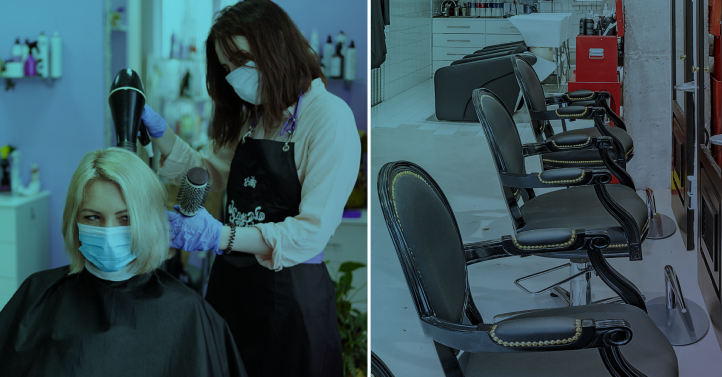Among the major shifts occurring in the salon industry are stylists moving from salons to independent businesses. The recently published Independent Stylist Study covering the United States, the United Kingdom, France, Russia, and Brazil reveals the key reasons independent hair stylists could become the turning point for the professional hair care industry. Here’s a rundown:
The number of independent hair stylists is increasing, putting salons under pressure
There were more than one million independent hair stylists in five researched markets, together growing by 9% in 2019. This growth was especially driven by developing markets such as Brazil and Russia, where the number of independent stylists showed double-digit increases in 2019. At the same time, there were approximately half a million salons in these countries, with a flat 1% growth. We expect that the number of independent stylists will further accelerate while salons will continue to close. The evolution of independent stylists is driven by favorable legislation in some markets but also because of the flexibility that enables them to make their own schedules, set prices, and reduce costs. At the same time, many independent hair stylists do not have the necessary education or experience to run their own business and would hence face challenges.
Product sales can make up for declining salon retail sales
Independent hair stylists’ share in the retailing of professional hair care products is already significant. In fact, their sales are growing, while those of salons are declining—in 2019, salons’ retail sales decreased by more than 3%. It is evident that independent stylists can sustain manufacturers’ brands’ sales in the future.
Increased importance of unique technical services
Revenues from haircutting and styling are similar between independent stylists and salons, representing almost half of revenues. The contrast is evident when it comes to services that are profitable for salons and rely heavily on education and a stylist’s technical skills. Coloring, perming, and relaxing services collectively account for a much higher share of independent stylists’ revenues than hair– salon revenues.
Independent stylists can make up for lost sales of salons that closed because of COVID-19
In Kline’s COVID-19 salon hair care assessment, we see a significant number of salon closures in 2020, with a slow recovery in the coming years. We estimate that part of closed salons’ sales will be recovered by an increasing number of independent stylists.
A holistic view of recent salon hair care industry developments can be obtained by a combination of three recently published studies: Independent Stylists: Global Market Brief, in which we survey hundreds of booth renters, mobile hairdressers, and at-home hairdressers located across Brazil, Germany, Russia, the United Kingdom, and the United States; the Salon Hair Care Global Series, covering 21 markets; and the Impact of COVID-19 on the Salon Hair Care Market, with the latest salon industry development scenarios for key global markets.

